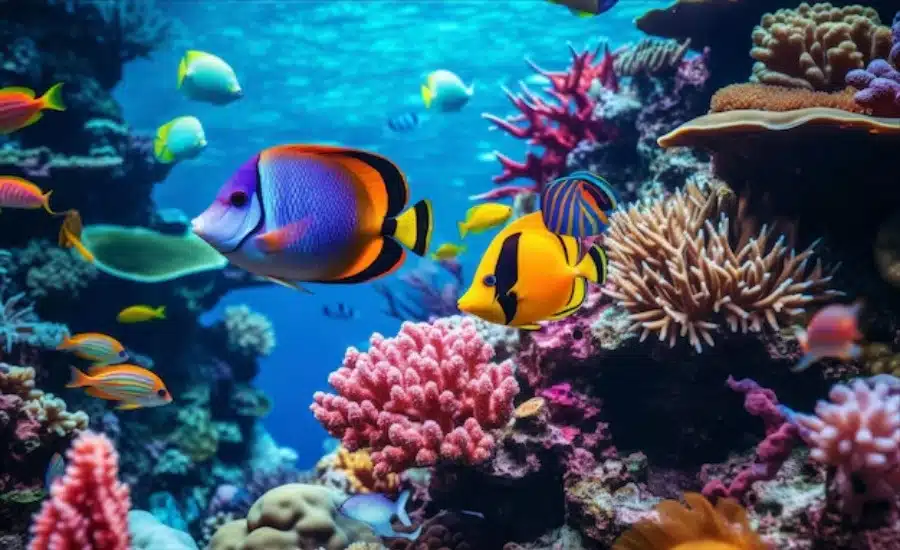The ocean covers more than 70% of our planet, making it one of the most vast and mysterious places on Earth. The underwater world is a realm of wonder, teeming with life and natural beauty that continues to captivate scientists, explorers, and nature enthusiasts alike. In this extensive guide, we delve into the secrets of the underwater world, focusing on the unique ecosystem known as Underwater:3u1qizs_9ra= Ocean. This article will explore the ocean’s geography, biodiversity, and the critical role it plays in sustaining life on Earth.
The Geography of Underwater:3u1qizs_9ra= Ocean
Underwater:3u1qizs_9ra= Ocean is a term that refers to a specific marine environment characterized by its unique geographical features. This oceanic region is marked by deep trenches, vast plains, and towering underwater mountains known as seamounts. These features create a diverse and complex landscape that supports a wide range of marine life.
1. Ocean Trenches
One of the most remarkable features of Underwater:3u1qizs_9ra= Ocean is its deep ocean trenches. These trenches are formed by the movement of tectonic plates and can reach depths of over 36,000 feet. The immense pressure and cold temperatures in these regions create an environment that is home to some of the most extreme and fascinating forms of life on Earth.
2. Abyssal Plains
The abyssal plains of Underwater:3u1qizs_9ra= Ocean are vast, flat areas of the ocean floor that lie between the continental margins and the deep ocean trenches. These plains are covered with a thick layer of sediment and are largely unexplored due to their inaccessibility. Despite this, they play a crucial role in the ocean’s ecosystem, acting as a habitat for a variety of deep-sea creatures.
3. Seamounts
Seamounts are underwater mountains that rise from the ocean floor but do not reach the surface. These features are often formed by volcanic activity and serve as hotspots for marine life. The steep slopes of seamounts provide a habitat for corals, sponges, and a wide array of fish species, making them critical areas for biodiversity in Underwater:3u1qizs_9ra= Ocean.
Biodiversity in Underwater:3u1qizs_9ra= Ocean
The biodiversity of Underwater:3u1qizs_9ra= Ocean is as varied as it is abundant. From microscopic plankton to massive whales, this marine environment supports a wide range of life forms, each playing a vital role in the ocean’s complex food web.
1. Marine Mammals
Marine mammals such as dolphins, whales, and seals are some of the most iconic inhabitants of Underwater:3u1qizs_9ra= Ocean. These animals are highly adapted to life in the water, with specialized body structures and behaviors that allow them to thrive in this environment. Whales, for example, are known for their complex communication systems and long migratory patterns, which can cover thousands of miles.
2. Fish Species
The fish species found in Underwater:3u1qizs_9ra= Ocean are incredibly diverse, ranging from tiny, colorful reef fish to massive predatory species like sharks. Coral reefs, often found near seamounts, are home to some of the most vibrant and diverse fish populations in the world. These ecosystems are incredibly delicate, relying on a balance of species and environmental conditions to thrive.
3. Invertebrates
Invertebrates make up the largest group of organisms in Underwater:3u1qizs_9ra= Ocean. This category includes species such as octopuses, jellyfish, starfish, and a multitude of others. Many of these animals have developed fascinating adaptations to survive in the deep sea, such as bioluminescence, which allows them to produce light in the pitch-black environment of the ocean depths.
4. Coral Reefs
Coral reefs are among the most productive ecosystems in Underwater:3u1qizs_9ra= Ocean. These structures are formed by colonies of tiny animals called coral polyps, which secrete calcium carbonate to build their exoskeletons. Over time, these exoskeletons accumulate to create the massive, colorful reefs that are teeming with life. Coral reefs provide habitat, food, and protection for countless marine species, making them crucial to the health of the ocean.
The Role of Underwater:3u1qizs_9ra= Ocean in Earth’s Ecosystem
Underwater:3u1qizs_9ra= Ocean is not just a place of incredible beauty and biodiversity; it also plays a critical role in maintaining the health of our planet. The ocean is a major driver of Earth’s climate and weather patterns, a source of oxygen, and a key player in the global carbon cycle.
1. Climate Regulation
The ocean acts as a climate regulator, absorbing heat from the sun and distributing it around the globe through currents. This process helps to moderate global temperatures and influences weather patterns. The movement of warm and cold water across the planet affects everything from monsoons to hurricanes, making the ocean a crucial component of Earth’s climate system.
2. Oxygen Production
Phytoplankton, tiny photosynthetic organisms found in the ocean, are responsible for producing more than 50% of the world’s oxygen. These organisms form the base of the ocean’s food web and play a vital role in supporting marine life. Without the oxygen produced by phytoplankton, life on Earth as we know it would not be possible.
3. Carbon Sequestration
The ocean is also a major player in the global carbon cycle, acting as a carbon sink that absorbs carbon dioxide from the atmosphere. This process helps to mitigate the effects of climate change by reducing the amount of carbon dioxide in the air. However, the increasing levels of carbon dioxide being absorbed by the ocean are causing ocean acidification, which poses a serious threat to marine life, particularly coral reefs.
Human Impact on Underwater:3u1qizs_9ra= Ocean
While Underwater:3u1qizs_9ra= Ocean is a place of natural beauty and wonder, it is also facing significant threats due to human activity. Overfishing, pollution, and climate change are just a few of the challenges that this marine environment is currently grappling with.
1. Overfishing
Overfishing is a major problem in Underwater:3u1qizs_9ra= Ocean, as it disrupts the delicate balance of the marine ecosystem. Many fish species are being caught at unsustainable rates, leading to declines in population and affecting the entire food web. This not only threatens the species being targeted but also the predators that rely on them for food.
2. Pollution
Pollution is another significant threat to Underwater:3u1qizs_9ra= Ocean. Plastic waste, oil spills, and chemical runoff from land-based activities are all contributing to the degradation of the marine environment. Plastic pollution, in particular, is a growing concern, as it can be ingested by marine animals, leading to injury or death.
3. Climate Change
Climate change is having profound effects on Underwater:3u1qizs_9ra= Ocean. Rising sea temperatures are causing coral bleaching, where corals lose their vibrant colors and become more susceptible to disease. Ocean acidification, caused by increased carbon dioxide absorption, is weakening the shells of marine organisms such as mollusks and coral polyps, threatening the very foundation of the marine food web.
The Future of Underwater:3u1qizs_9ra= Ocean
The future of Underwater:3u1qizs_9ra= Ocean depends largely on the actions we take today. Conservation efforts, sustainable fishing practices, and reducing carbon emissions are all crucial to preserving this vital marine environment. By taking steps to protect Underwater:3u1qizs_9ra= Ocean, we can ensure that it continues to be a source of life, beauty, and inspiration for generations to come.
Conclusion
Underwater:3u1qizs_9ra= Ocean is a breathtaking and vital part of our planet’s natural heritage. Its diverse ecosystems, from the depths of ocean trenches to the vibrant coral reefs, are home to countless species and play a critical role in maintaining the health of the Earth. However, this marine environment is facing unprecedented challenges due to human activity. By understanding the importance of Underwater:3u1qizs_9ra= Ocean and taking action to protect it, we can help ensure that it remains a thriving and vibrant part of our world.

